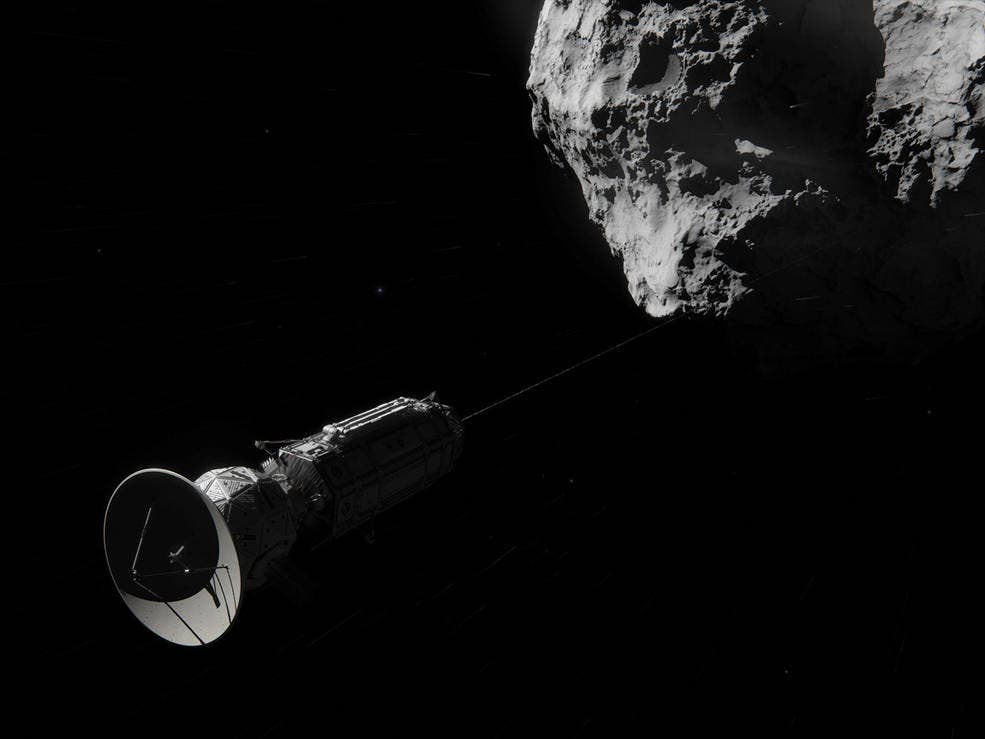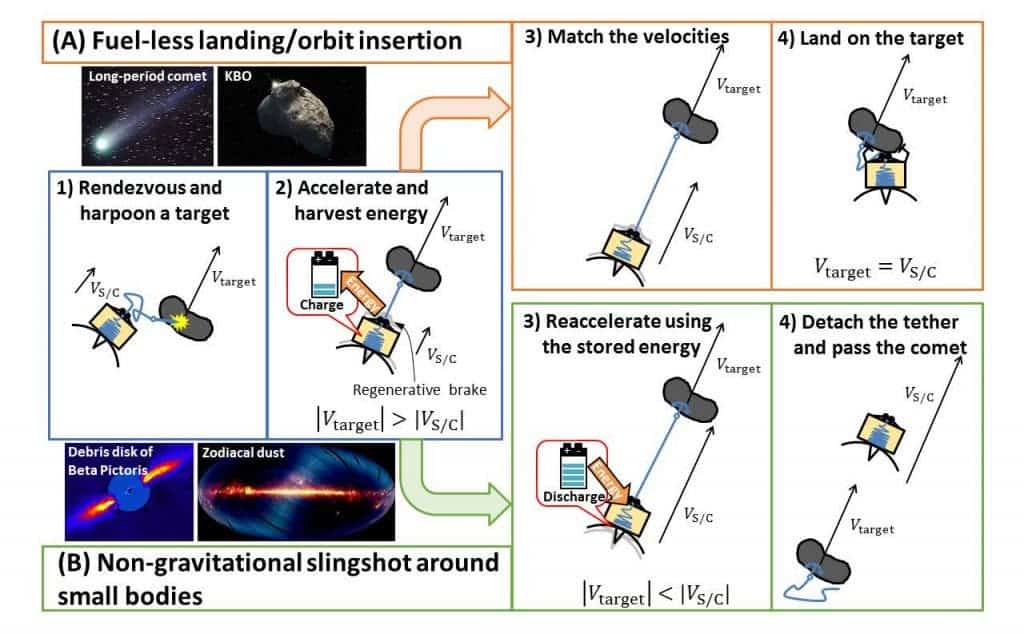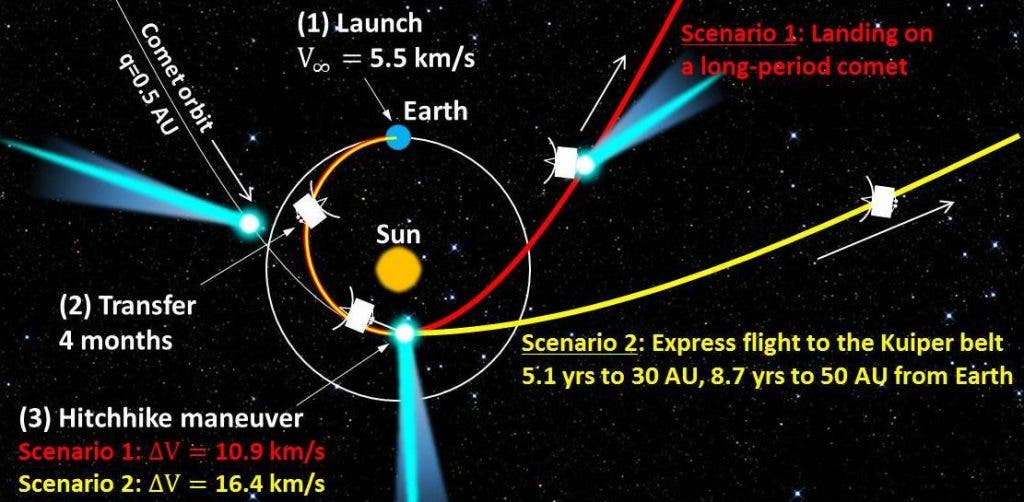It’s ludicrous, but it might just be crazy enough to work. On Monday, during the American Institute of Aeronautics and Astronautics SPACE conference, Masahiro Ono unveiled one of NASA’s most recent concepts: hitching a ride on a comet. In short, once a spacecraft is close enough it would launch a tether with a harpoon on the other side, attach to the comet or asteroid then basically reel in until touch down. Once there the probe stays put, recharging its batteries by harvesting energy all while performing some science experiments. When it’s done, the probe can detach in search of a new piggyback ride.

The project isn’t called Comet Hitchhiker for nothing – a nice tribute to the science fiction comedy series The Hitchhiker’s Guide to the Galaxy. “We strongly believe that the Comet Hitchhiker concept will advance the frontier of space exploration to the most exotic worlds in the Solar System,” said Ono.
To explain how the whole idea might work, Ono writes on the NASA website:
“This idea can be intuitively understood by the analogy of fishing. Imagine a fisherman on a small boat tries to catch a big fish that runs at a high relative speed. Once the fish is on a hook, the experienced fisherman would let the line go while applying a moderate tension on it, instead of holding it tightly. If the line has a sufficient length, the boat can eventually catch up with the fish with moderate acceleration.”
The tether would be made from carbon nanotubes – an extra strong material – and because there’s vacuum in space, when the tether is reeled in once contact is made, a generator can harvest energy when the regenerative brake force is applied. In fact, this brake can generate ~25 GJ of energy assuming a 2-tone hitchhiker or more than enough to power 1 kW consumption over 290 days. Then, the hitchhiker simply needs to untether at the right moment and sling-shot to its next target.

Ono believes this sort of concept would be ideal around the Kuiper Belt, a vast domain beyond Pluto filled with icy asteroids, most as old as the solar system itself. As many as 10 bodies could be visited this way, maybe even more, during one single mission. Last year, the Philae lander touched down on an asteroid marking the first time a man-made craft docked this way. It also used a harpoon to tether to its target, Comet 67P. However, this was an one time deal and Philae or its mothercraft, Rosetta, had no plans on visiting other targets.
Not only would a hitchhiker prove more useful by landing on multiple target, it would also reach its goal fast. For instance, while New Horizons took almost ten years to flyby past Pluto, a hitchhiker could potentially reach Pluto in 5.5 years if it hitches the right ride.



